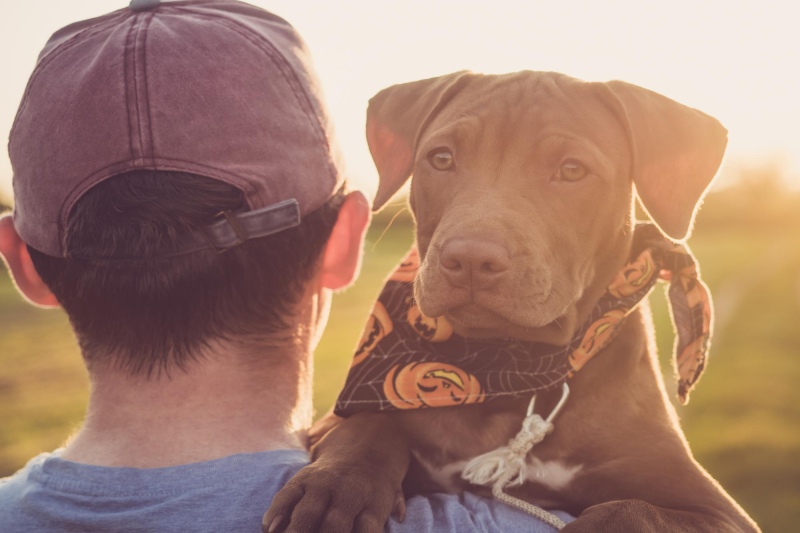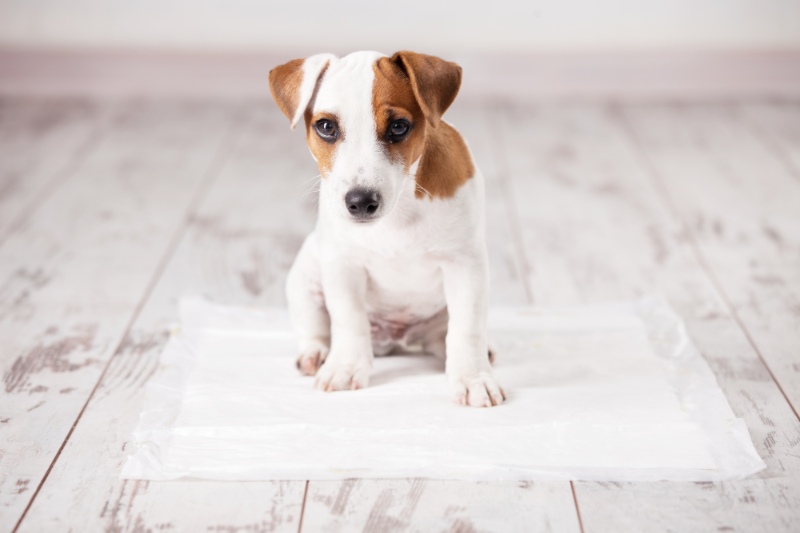Dogs are emotional creatures, and as their pet parents, it’s important that we know how to recognise the symptoms of dog anxiety.
Reading your dog’s body language is the best way to understand its state of comfort. Your ability to interpret the signs of anxiety in your dog makes all the difference in fixing or preventing the particular problem that is causing it in the first place.
Canine anxiety can manifest itself in a variety of ways that you’ll need to be aware of, due to circumstances both within and beyond your control. This can sometimes make the symptoms difficult to recognise and treat, and untreated anxiety in dogs can create deeper problems over time, potentially leading to a lower quality of life.
Fortunately, we know what signs to look out for, so read on to ensure you have the knowledge to identify and address your dog’s anxiety effectively.
Recognising the signs of dog anxiety
Urinating or defecating in the house
This kind of behaviour is likely a result of anxiety, especially if your dog has already demonstrated successful potty training, isn’t suffering from a urinary tract infection, or isn’t clearly excited about something specific.
Messes like these can certainly be frustrating to clean up, and although you may feel upset at that moment, it is counterproductive to punish your dog, especially if this behaviour is a result of anxiety.
Drooling and yawning
Drooling is quite normal behaviour in a dog, however, excessive excretions can be signals of anxiety. If your dog is drooling when there is no food around or for no obvious reason, you should consider it a sign of potential discomfort.
Alternatively, if your dog drools in general anyway, there are other signs you can watch out for such as stress yawns, which are longer and more exaggerated than regular yawning.
Excessive panting without hot temperatures
Not all panting is happy panting. Depending on the reason why your dog is doing it, there are subtle differences in expression if panting is a result of anxiety.
Anxious panting can be accompanied by turned ears, greater visibility of the white of their eyes, certain tail postures, and drawn-back lip corners.
Some of these signs may appear when your dog is simply hot and is panting to cool down, but if anxiety is the cause, you might notice these signals even without any hot weather or rigorous activity.
Destructive behaviour
Destructive behaviours such as chewing, shredding, gnawing or tearing are clear signals of anxiety in dogs.
Whether it’s due to separation anxiety or the need for more mental or physical stimulation, your pooch might completely go to town on your furniture, bedding, clothing or footwear!
Depression
Signs of depression can be hard to spot in your dog. With careful observation, however, you may notice an accumulation of behavioural changes such as a loss of activeness, motivation, or appetite.
These can also be signs of old age or other underlying medical conditions so a trip to the vet is always your best bet!
Pacing
Pacing is one of the more obvious symptoms of anxiety in dogs. When a dog feels restless, helpless or concerned about something, this anxiety often manifests itself in pacing back and forth at a particular spot.
Repetitive or compulsive actions
Much like nail biting in humans, dogs can exhibit nervous compulsive behaviours too. These compulsive behaviours, spurred on by anxiety can include biting or chewing their paws and nails or obsessively licking an object or body part.
Excessive barking or howling when home alone
Separation anxiety, usually identified through consistent barking, yelping or howling when left at home alone, is a classic example of dog anxiety.
Certain breeds of dogs do not like being left alone at all, and if your dog is excessively barking or howling in your absence, this can become a major source of guilt and stress for you as an owner, as well as a noise issue for any neighbours you have.
Shivering
Unless there is cold weather and your dog has been outside for a significant period, there aren’t many other reasons for your pooch to be shivering except for anxiety.
Digging
While digging can often seem like a playful mischievous thing for your dog to have fun doing, in some circumstances, it can actually be a symptom of anxiety.
From the perspective of a dog, digging can feel like a means of escape from something bothersome or anxiety-inducing, or it can simply be a release from a build-up of anxious tension.
Running away and/or cowering in the corner of a house
When dogs feel anxious, they may react by running away and cowering in a specific room or corner of your home. This is a likely reaction when there is a lot of commotion going on, such as a visit from guests they don’t know, or noisy activities such as housework or home renovation.
Loss of appetite
Anxiety can result in your dog losing its appetite. Even the hungriest dogs can skip a meal or refuse treats when suffering from anxiety, making this an easily recognisable symptom of stress.
Loss of appetite can also be a symptom of other medical conditions so it’s an important one to check with your vet at the earliest opportunity.
General inability to settle / restlessness
When your dog can’t seem to settle, it can be a sign of anxiety. Your dog might constantly change positions, pace around, or move to different areas of the house in search of comfort.

How to treat dog anxiety
At Mark + Chappell, we understand how much you love your dog and how upsetting it can be to watch them suffer from anxiety.
But now you know the signs to watch out for, and with some careful observation, you might be able to act decisively and help your dog feel some immediate relief from anxiety.
One thing to keep in mind is that dogs with anxiety need your patience and understanding. Getting mad or frustrated with your dog’s stress-induced behaviours or forcing them to stop can remove their only outlet for dealing with it.
Taking the time to figure out and understand the root causes of their anxiety will help you to identify their triggers and take steps to mitigate or remove them.
For further help in treating your dog’s anxiety, we recommend the following products:
Serene-UM Calming Tablets and Serene-UM Xtra are natural dietary supplements that are recommended by vets to lessen anxiety in dogs without having a sedative effect.
Serene-UM Drops – these specially formulated drops help to reduce anxiety in dogs in situations where calming tablets can’t be administered and are suitable for smaller dogs up to 10kgs in weight.
Also, make sure to check out our blog for more advice on how to be the best dog owner ever!





